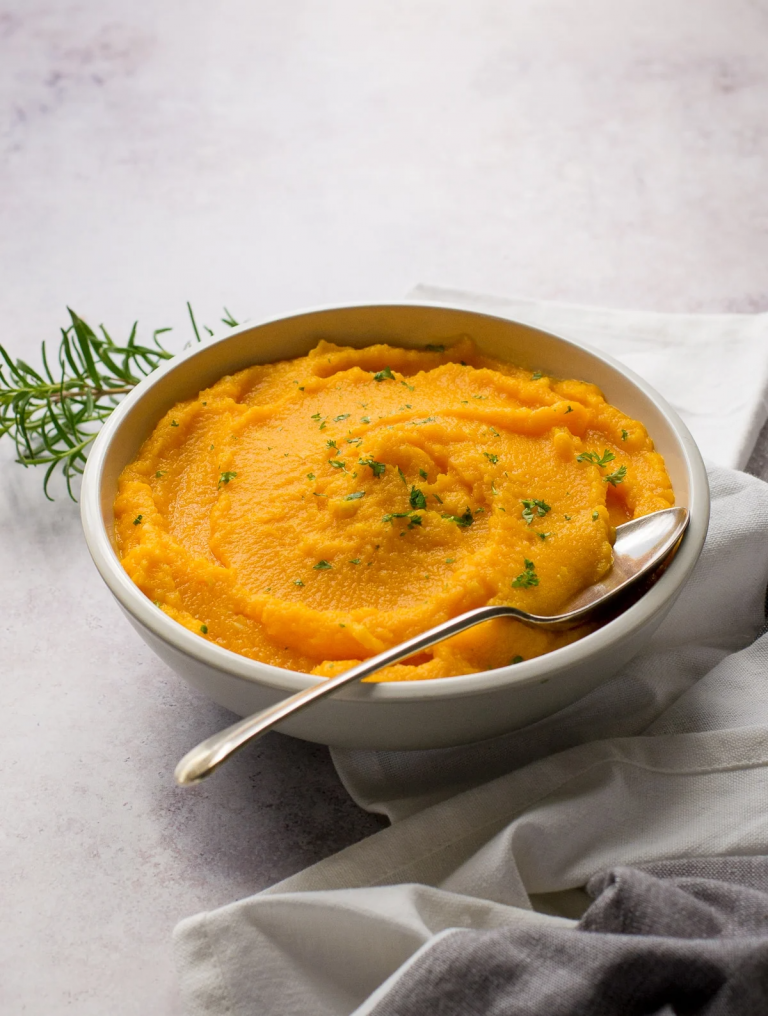
Pancakes with Blueberry Compote, The Seasonal Vegan
Eating with the seasons means enjoying fruits and vegetables at their peak, which brings out the best flavours and nutrients. Using fresh, seasonal plant-based ingredients doesn’t just taste better, it’s also kinder to the planet by cutting down on food miles and waste.
Cooking this way adds variety to meals throughout the year, keeping your menu exciting and full of colour. This post will share simple ideas to help you enjoy seasonal produce with easy, tasty recipes that feel fresh every time.
Before cooking, read up on food safety for people and pets. It’s best to just bin allium scraps (onion, leeks, garlic, shallots, chives) along with rhubarb, tomato and citrus scraps, as acids may harm compost creatures.
If growing food, make gardens safe for pets (includes indoor plants – avoid facing indoor foliage to gardens, to stop birds flying into windows.
Why Choose Seasonal Plant-Based Food?
Using seasonal plant-based ingredients isn’t just about following a trend. It brings some clear, real benefits that make cooking easier and meals tastier. When fruits and vegetables grow naturally during their season, they tend to develop the best flavours and textures.
Imagine biting into a ripe summer strawberry or a freshly harvested pumpkin in autumn—these moments show how seasonality really matters. Choosing seasonal produce gives you access to fresher food that is often picked at the right time, not forced to ripen off the shelf.
Better Flavour and Texture
Seasonal fruits and vegetables taste better because they are harvested when fully ripe. Unlike out-of-season options that may be picked early and artificially ripened, seasonal produce has time to develop natural sugars and flavours. For example:
- Tomatoes in summer have a rich, juicy sweetness that store-bought ones frequently lack.
- Carrots harvested in autumn tend to be sweeter as natural starch turns to sugar.
- Apples in fall deliver a crisp bite and balance of tartness that fades as they age.
These differences happen because the plant fully matures in the right climate and soil conditions. Once you start cooking with seasonal ingredients, you’ll notice the boost in taste immediately.
Higher Nutrient Content
When fruits and vegetables ripen naturally, they hold onto more nutrients. The longer fresh food sits after harvest before reaching your kitchen, the more vitamins and minerals it loses. Choosing seasonal produce usually means shorter time between farm and table, which keeps nutrients intact. For example:
- Spinach picked fresh during spring is packed with iron and vitamin C.
- Sweet corn in late summer contains more fibre and antioxidants than frozen versions stored longer.
You get more nutritional value without extra effort, which helps you feel good after every meal.
Cost Savings
Eating seasonally also saves money. Produce that’s in season tends to grow abundantly, so prices drop due to supply and demand. Off-season fruits and veggies often come from far away or require special storage, which adds cost. Some seasonal deals you might spot include:
- Strawberries in early summer, often discounted at farmers markets.
- Pumpkins in autumn, available in larger quantities and at better prices.
Shopping seasonally means you don’t have to break the bank to enjoy fresh, wholesome ingredients.
Environmental Benefits
Picking seasonal produce helps the environment by reducing food miles—the distance food travels from farm to plate. When you choose what’s in season locally, you support farmers in your area and lower the carbon footprint created by long-distance transport. This approach also reduces the need for energy-heavy storage and packaging.
Buying seasonal means:
- Supporting local growers and keeping money in your community.
- Cutting down waste linked to off-season imports.
- Encouraging more sustainable farming methods suited to the time of year.
Seasonal Guide to Plant-Based Ingredients
Eating with the seasons means tapping into fresh, vibrant flavours and textures throughout the year. Each season brings its own character to fruits, vegetables, and herbs, making it easier to plan meals that feel both satisfying and in tune with nature’s rhythm. This guide breaks down what to look for in each season and offers simple ideas you can use to bring those ingredients to life.
Spring: Fresh and Light
Spring produce is all about new growth and bright flavours. Think of it as nature’s way of waking up after winter—a crisp, clean burst on your plate. Key ingredients like asparagus, peas, radishes, and a variety of leafy greens (spinach, rocket and young kale) shine in this season. They’re tender, slightly sweet, and perfect for dishes that don’t weigh you down.
Try using these ingredients in easy meals like fresh salads with lemon vinaigrette, light vegetable soups with peas and spring onions, or quick stir-fries featuring asparagus and tender greens. When buying, look for firm asparagus tips, bright green peas in their pods, and radishes with smooth skin and vivid colour. Most spring greens keep well for a few days in the crisper drawer but use them quickly to enjoy peak freshness.
Summer: Bright and Bold
Summer is the season to enjoy vegetables and fruits bursting with colour and sunshine flavour. Tomatoes become incredibly juicy, zucchinis are tender and mild, berries are at their sweetest, and herbs such as basil, mint, and oregano offer fresh, aromatic punches.
Dishes to try include grilled vegetable platters with zucchini and peppers, chilled gazpacho or cucumber soup, and vibrant fruit desserts featuring berries and herbs.
When shopping, select tomatoes with smooth skin and a deep red colour, zucchini that’s firm with glossy skin, and berries that are plump and smell sweet. Store berries in the fridge and use within a few days, while zucchini stays fresh in a breathable bag for up to a week.
Autumn: Warm and Hearty
Autumn calls for comfort and warmth on the plate. During this season, pumpkins, squash, root vegetables like carrots and parsnips, and apples reach their peak. These ingredients offer a sweeter, earthy taste that pairs beautifully with heartier cooking styles.
Use these to prepare dishes like rich vegetable stews, roasted root vegetables with herbs, and baked goods such as apple crisps or pumpkin bread. When selecting pumpkins or squash, look for firm skin and a deep, even colour.
Root vegetables should feel heavy for their size and have smooth, unwrinkled skin. Apples should be crisp with no bruises. Store pumpkins and squash in a cool, dark place for several weeks; root vegetables keep well in the fridge wrapped loosely in paper.
Winter: Nourishing and Cosy
Winter produce is about staying nourished with vegetables that stand up to the cold. Think of hardy greens like kale and collards, citrus fruits like oranges and grapefruits, and winter squashes such as butternut or acorn. These items bring rich flavour and nutrition when you need it most.
Warming casseroles, thick stews, and hot drinks with citrus zest or spice are excellent ways to enjoy winter’s bounty. When selecting winter greens, choose leaves that are dark and vibrant with no yellowing or wilting.
Citrus should feel heavy and firm, indicating juiciness. Winter squash, like pumpkins, should be stored in a cool, dry place to last. Greens stay fresh for about a week if wrapped loosely and kept in the fridge.
Tips for Cooking Seasonal Foods
Cooking with seasonal plant-based ingredients can sometimes feel limited when certain favourites aren’t available. The good news is, there are smart ways to keep your meals tasty, balanced, and fresh no matter the time of year.
Two key strategies are using herbs and spices to lift flavours and making smart ingredient swaps when fresh produce is out of season. These methods keep your cooking interesting and prevent you from relying on the same ingredients all year.
Using Herbs and Spices to Boost Flavour
Herbs and spices are your secret allies in making plant-based dishes pop without extra fuss. They brighten flavours naturally and can turn simple recipes into something memorable. Fresh or dried, herbs add layers of aroma and zest that complement seasonal vegetables and fruits.
You don’t need to overcomplicate things either; a handful of well-chosen herbs or a pinch of the right spice is often enough.
Here are some common, easy-to-use combinations to try with seasonal produce:
- Spring: Fresh dill and chives work beautifully with peas, asparagus, or new potatoes. A touch of lemon zest boosts the freshness.
- Summer: Basil and oregano enhance tomato dishes and grilled courgettes. Mint pairs well with sweet summer fruits like watermelon or berries.
- Autumn: Sage and rosemary add warmth to roasted pumpkins, squash, and root vegetables. Nutmeg or cinnamon can bring depth to pumpkin soups or apple-based desserts.
- Winter: Thyme and bay leaves enrich hearty stews and braised greens. A little ground cumin or smoked paprika lifts winter squash dishes.
Dried herbs and spices hold their own when fresh versions aren’t handy, but add them earlier in cooking to allow their flavours to develop fully. For fresh herbs, sprinkle them near the end for a brighter, more delicate finish.
Using herbs and spices means you don’t have to rely solely on salt or fat for flavour, which keeps your meals healthier and fresher. Try experimenting with small amounts until you find blends that suit your taste. You might find that simple combinations like garlic and rosemary or ginger and coriander become your go-to staples.
Smart Substitutions for Off-Season Gaps
Sometimes the ingredients you want are not in season, or local options are limited. Rather than disrupt your meal plans or turn to bland alternatives, swapping with preserved, frozen, or local items can save the day while keeping nutrition and flavour intact.
Here are some practical ideas for substitutions:
- Frozen produce: Frozen peas, corn, berries, and spinach are picked and frozen at peak ripeness, locking in nutrients and flavour. They’re excellent in soups, stews, smoothies, or stir-fries.
- Canned or jarred veggies: Good-quality canned tomatoes, roasted red peppers, or artichokes are versatile and shelf-stable. Drain and rinse canned beans to reduce salt.
- Root cellared or cold-stored vegetables: Some stores and farmers provide cold-stored carrots, beets, and apples well after their season ends. These often taste fresher than imports.
- Local alternatives: If your favourite vegetable isn’t available, look for similar textures or flavours from local produce. For example, use local swede instead of imported turnips, or kale when collards aren’t in season.
- Preserved herbs and aromatics: Dry or freeze your own herbs in small portions when in season, so you can add fresh flavours even months later. Garlic confit or pickled ginger add punch without needing fresh ingredients.
By keeping a well-stocked pantry and freezer with seasonal staples, you can build meals around what’s available. This also helps reduce waste since you can use leftovers or surplus in creative ways. For instance, frozen pumpkin purée can replace fresh in recipes for soups or baked goods during winter.
Keeping these swaps in mind makes cooking with the seasons more flexible. You don’t lose out on taste or nutrition and can easily adapt recipes to what’s on hand. This way, your plant-based meals stay exciting every month, regardless of weather or market offerings.
Seasonal Plant-Based Recipe Books
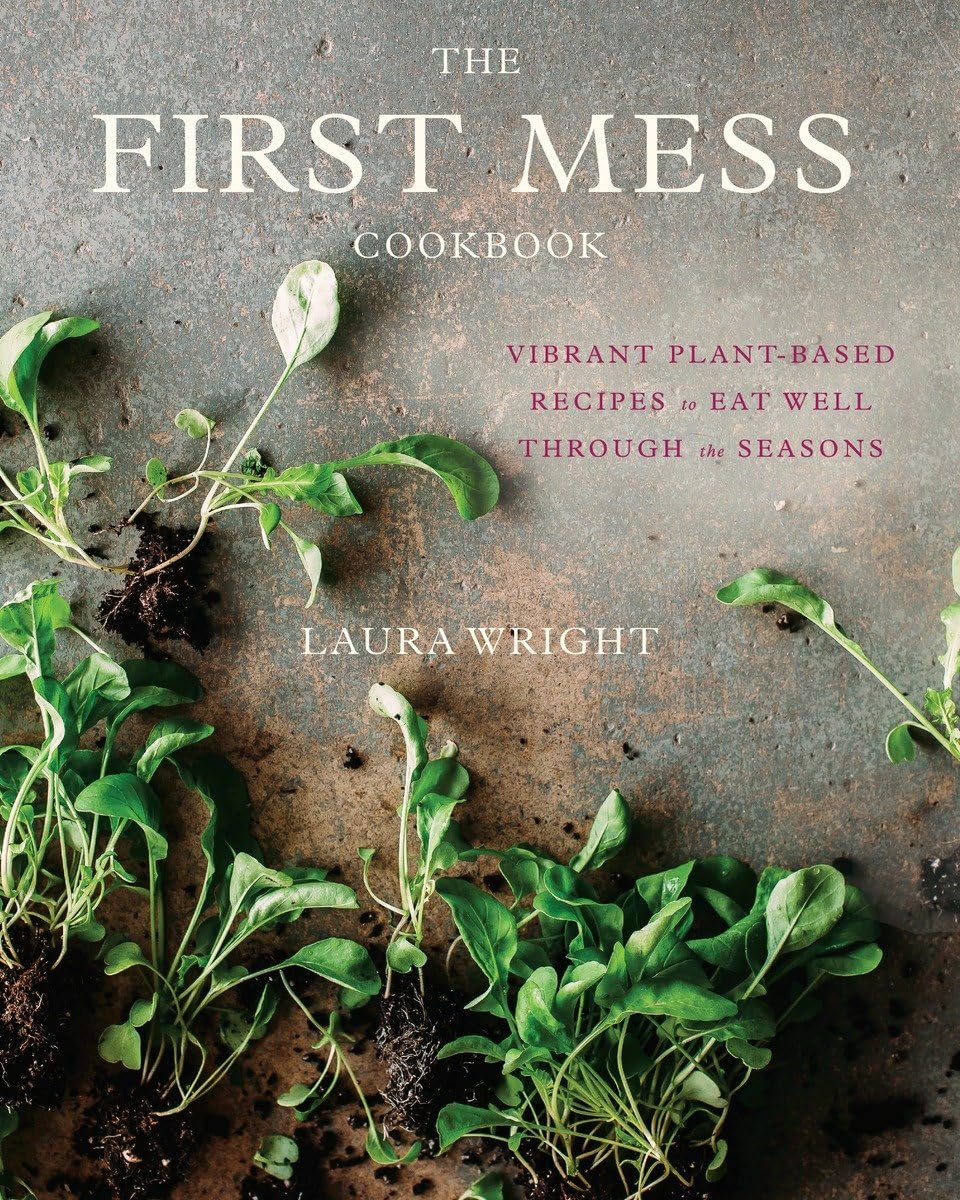
The First Mess is a highly-reviewed cookbook packed with wholesome recipes to eat through the seasons. What makes this book different is that it uses real locally-sourced organic ingredients to create recipes, using seasonal finds from your weekly veg box.
The author is a Canadian who grew up in a family that ran organic box schemes. She trained as a chef, and also writes and photographs well. So all combined, you end up with a smashing book. Recipes include:
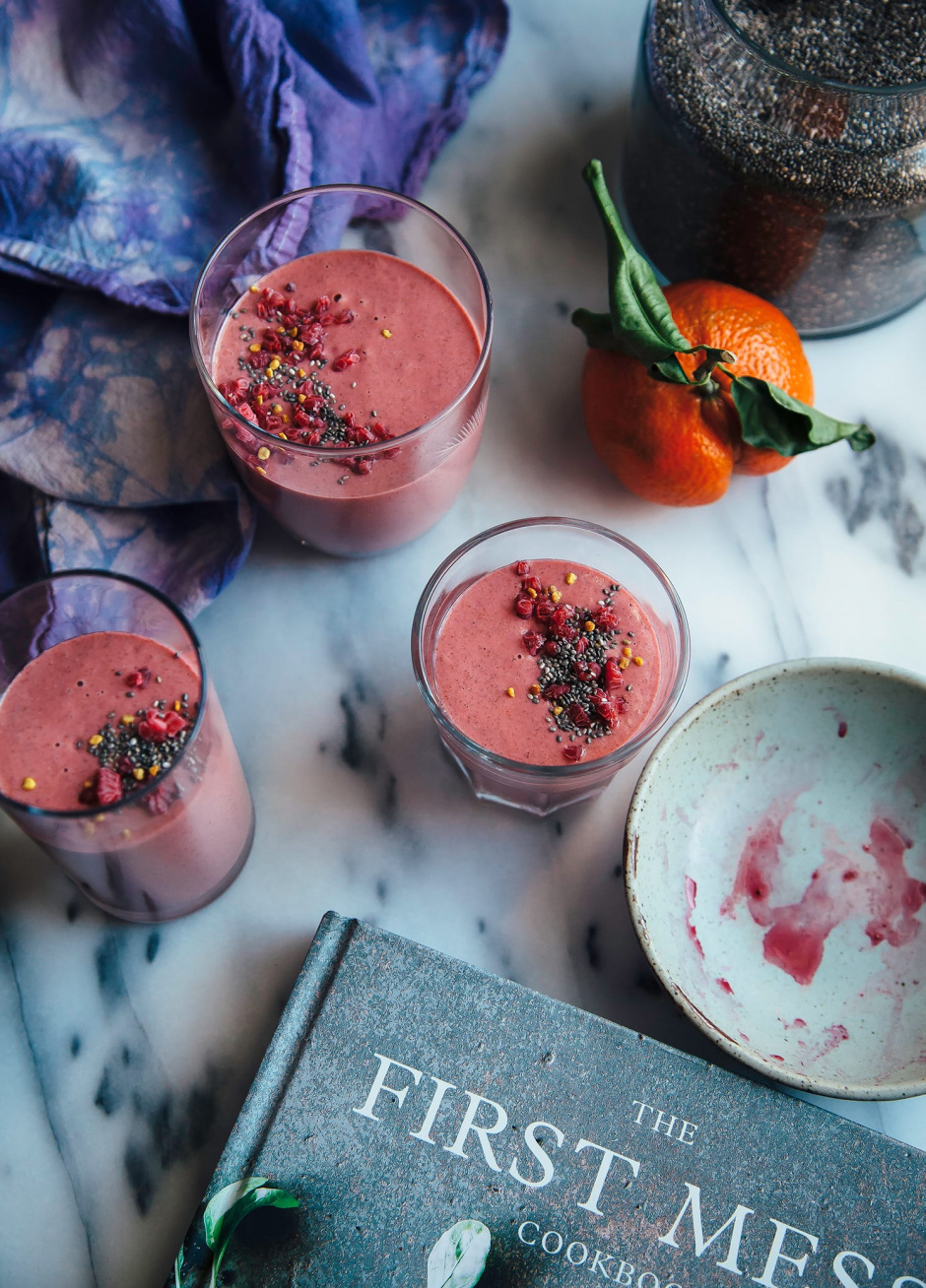
- Fluffy whole grain pancakes
- Hot pink beet smoothie
- Broccoli Caesar with smoky tempeh bits
- Vegetable bean pot pies with potato crust
- Weeknight root vegetable dal
- Burrito-stuffed sweet potatoes
- Romanesco confetti salad with Meyer lemon dressing
- Roasted aubergine & olive bolognese
- Earl Grey & vanilla bean tiramisu
- Chilli tofu lime bowls
- Beet & mushroom bolognese
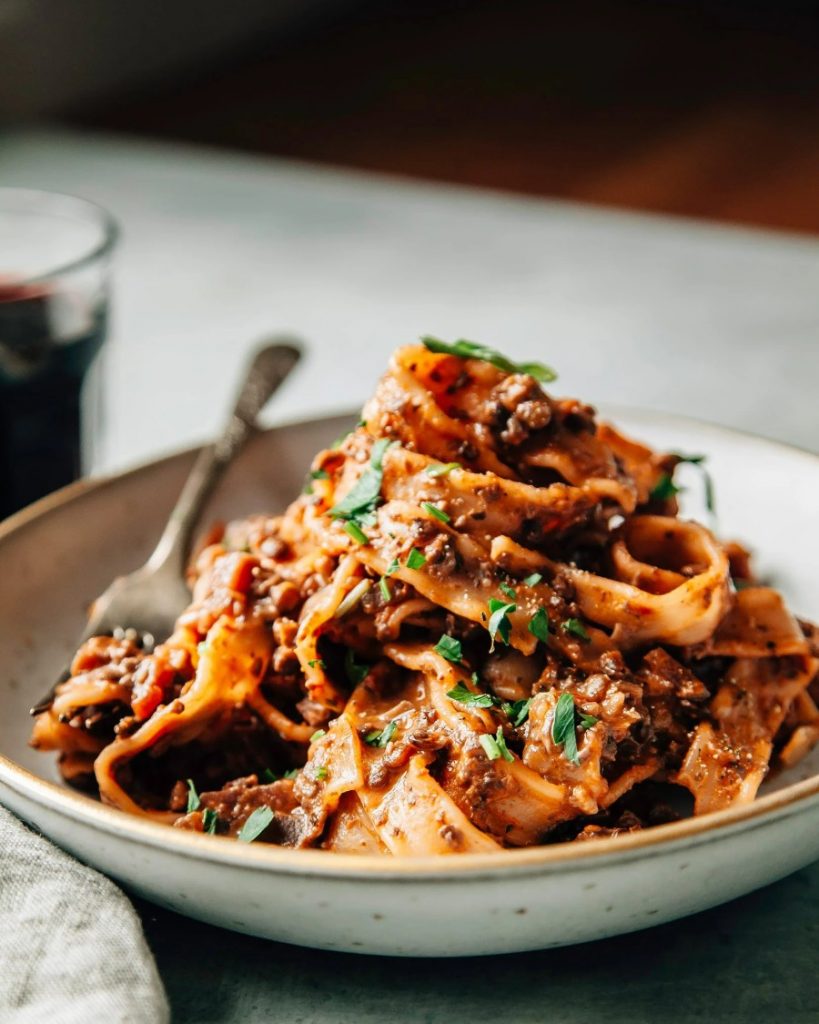
Laura Wright has been cooking and testing plant-based seasonal recipes for years. Her cooking blog is one of the most popular in the world, packed with recipes that use real affordable ingredients, and turn out well each time.
Many of her readers are not vegan, she prefers to simply focus on good food to inspire, rather than be a ‘celebrity chef’.
A Vegan Guide to Local Sustainable Eating
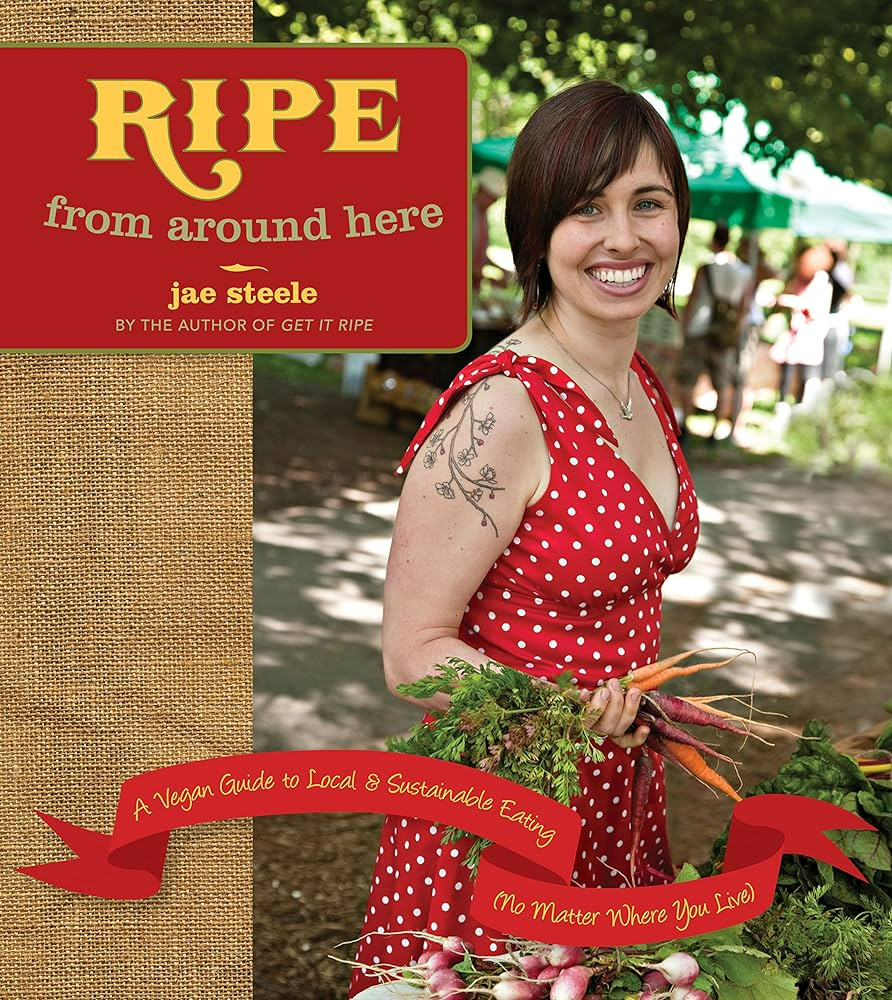
Ripe From Around Here is a corker of a book (the debut book Get It Ripe is also excellent). The book is almost 15 years old but never dates, because it’s all about local sustainable eating (the extensive intro is worth the price of the book alone) followed by oodles of amazing recipes and meal plans by a vegan chef and baker, who can make wholefood recipes taste as good as any other.
Jae has since given up writing cookbooks, but these two books are her legacy, and worth reading and cooking from.
A woman ahead of her time, she was writing about all the things we’re now discussing (food waste, organic food, community supported agriculture) over a decade ago. Recipes include:
- Mushroom asparagus risotto
- Wild rice with wild leeks
- Roasted fiddleheads with garlic
- Pear parsnip soup
- Strawberry shortcake
- Plum upside-down cake
- Blackberry peach cobbler
- Sweet cherry pie
- Lavender blueberry ice-cream
- Ginger peach ice-cream
A Book of Seasonal Vegan Recipes
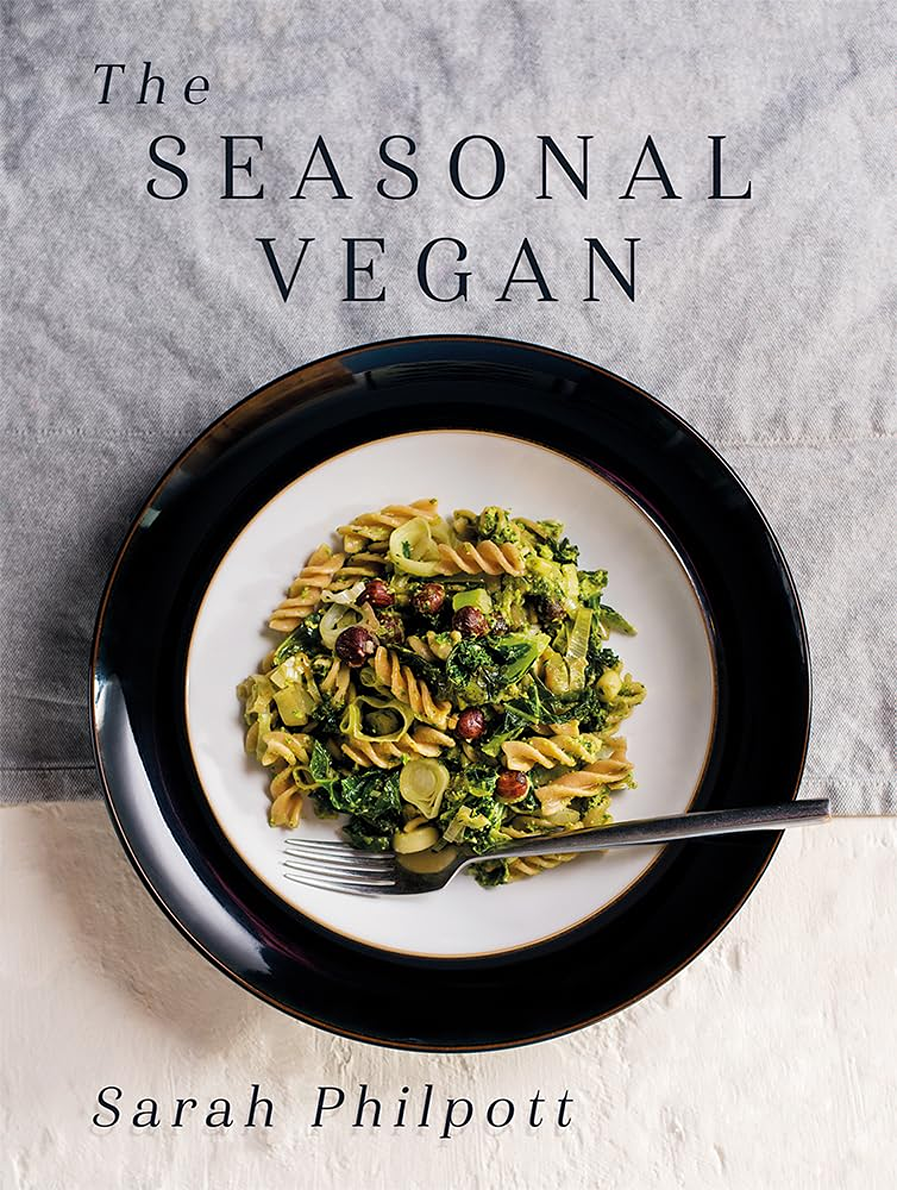
The Seasonal Vegan is a book of simple affordable recipes that make use of local seasonal produce. Each recipe is geared to seasonal crops, with some year-round menus. Illustrated with beautiful colour images, these recipes reduce environmental impact, spare our wallets and let you enjoy tasty wholesome food.
Arguably, the best recipe books are those that use real seasonal ingredients, so here are a few of the best. Not only is food tastier and cheaper, you’ll find it has fewer food miles and less plastic packaging.
Debunking the myth that seasonal eating is only for people on higher incomes, eating local produce tastes better and costs less too. It also supports local farmers and producers (and is fresher, so tends to be more nutritious). Each of the 70 recipes includes a diary entry. Recipes include:
- Pancakes with blueberry compote
- Summer berry & coconut milk ice lollies
- Potato salad with watercress pesto
Sarah Philpott is a freelance copywriter and proofreader, who presents cooking programmes in her native Welsh language on TV. She also has a recipe column in a Welsh magazine.
Grow, Store and Cook Vegan Food
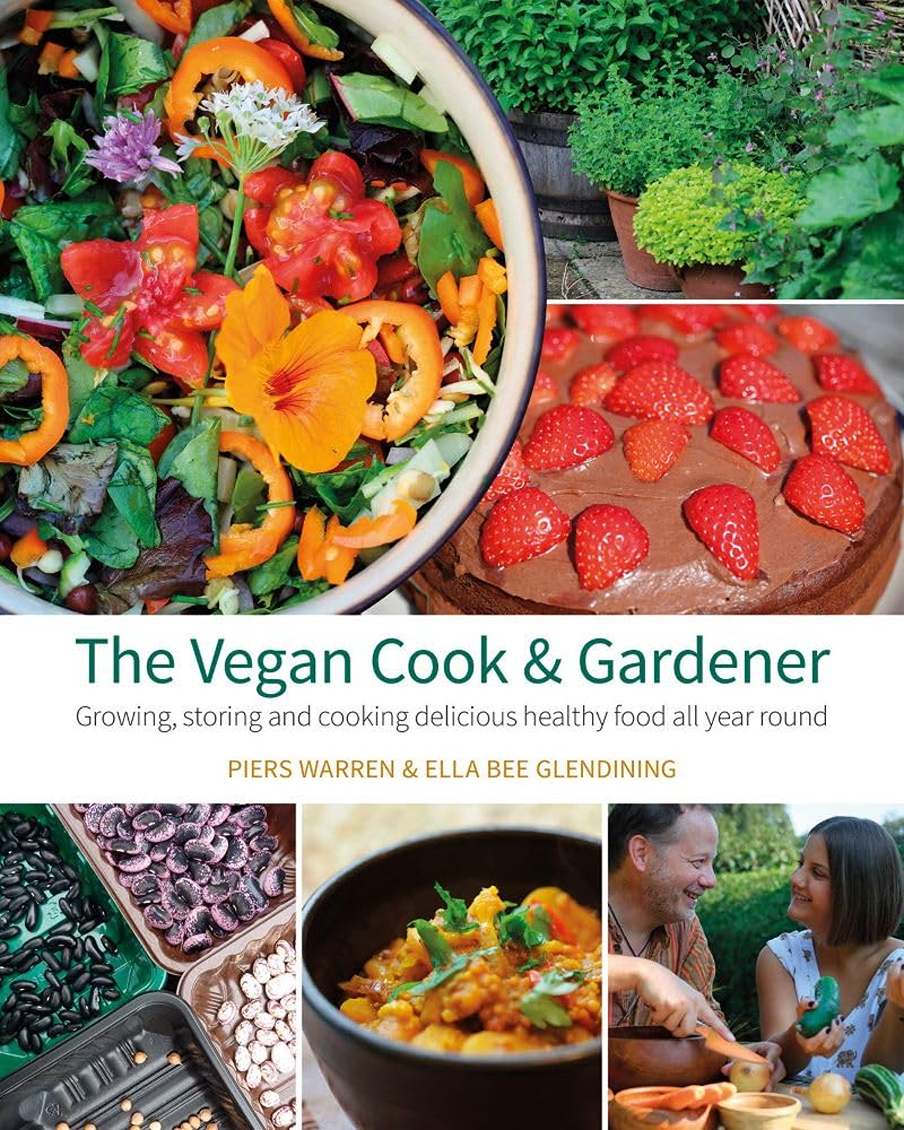
The Vegan Cook & Gardener is a wonderful book, co-written by a father who is an expert at growing and preserving food, then recipes are by his daughter. This is simple feel-good budget-friendly food, ideal if you don’t want anything too fancy, with recipes for soups, mains and carrot or strawberry chocolate cake.
At once scholarly and entertaining, the book is gloriously illustrated, and the recipes are easy-peasy to follow. Joanna Lumley
I LOVE this book! Exhaustive, written in worlds that the layperson can understand and beautifully illustrated throughout. Paul Kerton
If you have a small plot, this is for you. If you have a balcony, this is for you. If all you have is hope, this is for you. It’s that good. Benjamin Zephaniah
Piers Warren and Ella Bee Glendining (father and daughter) are both experienced vegan cooks. Piers is a conservationist, permaculture expert and wildlife filmmaker who wrote the best-selling book How to Store Your Garden Produce.
Ella Bee is a passionate advocate for animal welfare, who has recently received huge accolades for directing the film Is There Anybody Out There?‘, where she tries to find others with the same rare disability as her.
Conclusion
Cooking with seasonal plant-based ingredients brings fresh flavours and a welcome variety to your meals throughout the year. It’s a simple way to enjoy food that tastes better, feels healthier, and respects the environment. Starting small, like trying a new vegetable each season or adding different herbs, can make this approach feel easy and enjoyable.
Enjoy the changing seasons on your plate and feel confident experimenting with what’s available locally or from your pantry. This mindful way of cooking can turn everyday meals into something more rewarding and connected to nature’s rhythm. Thanks for reading, and here’s to discovering the joy of fresh, seasonal plant-based cooking.


